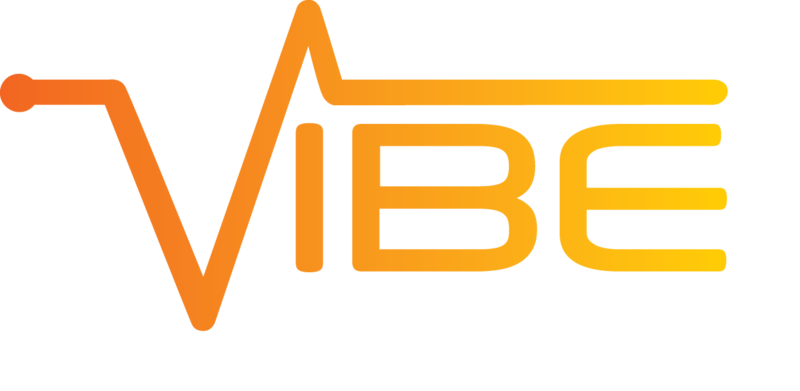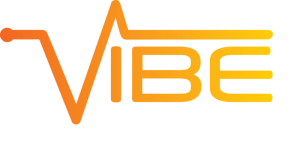Strength Training: Building Muscle for a Healthier Tomorrow

If you are also one of those who think strength training is just for bodybuilders, we have some news for you.
Did you know that adults can start losing up to 5% of their muscle mass per decade after the age of 30? This gradual decline, known as sarcopenia, can sneak up on even the most active individuals, leading to weakness, poor balance, and increased risk of injury. But there’s good news: you can fight back.
So, strength training is not just for athletes or bodybuilders, it is the most powerful way to build muscle, boost metabolism, and maintain independence as you age. So, if you have been pushing weights away till now, it’s time to make them your best friend.
In this blog, we’ll explore why strength training is essential for long-term wellness, bust common myths, offer beginner-friendly tips, and guide you on how to safely build a routine that fits your lifestyle. So, get ready to invest in the strongest version of yourself
Proven Benefits of Strength Training
Strength training is like giving your body a long-term investment plan, one that pays off in strength, resilience, and overall vitality. Beyond just building muscle, resistance workouts offer a range of powerful benefits that enhance every aspect of your health.
- Improved bone density
As we age, our bones naturally become more fragile, making us prone to fractures and conditions like osteoporosis. Strength training places controlled stress on bones, which stimulates them to grow denser and stronger, much like how lifting heavier loads makes muscles grow. According to the National Osteoporosis Foundation, resistance exercises are one of the most effective ways to maintain or even increase bone mass. Better metabolism & weight control - Enhanced posture and balance
Strength training develops the core, back, glutes, and stabilizing muscles that support proper alignment and body control. Better posture isn’t just about looking confident; it prevents strain on the spine and reduces lower back pain. Plus, balance-focused movements (like lunges and single-leg deadlifts) help train the body to respond to real-life scenarios like catching yourself from a stumble or quickly shifting direction. - Better Metabolism & Weight Control
Muscle is metabolically active, meaning it burns calories even when you’re not working out. The more lean muscle mass you have, the higher your resting metabolic rate. With consistent strength training, your body becomes more efficient at using energy, helping with fat loss, blood sugar regulation, and long-term weight management. This makes it a game-changer for those struggling with stubborn fat or weight plateaus. - Mental health benefits: reduced anxiety & depression
One of the most important benefits of strength training involves your brain. Numerous studies show that strength training can reduce symptoms of depression and anxiety by increasing endorphins (your brain’s natural mood boosters), improving self-esteem, and providing a sense of accomplishment. It gives you structure, purpose, and visible progress. It is proof that you’re capable of overcoming challenges, both physical and emotional. - Boost in energy and daily functionality
Regular resistance training enhances mitochondrial function (your cells’ energy factories), which boosts stamina and helps you power through your day. After strenuous training, you’ll notice that simple tasks, such as carrying laundry, playing with kids, and climbing stairs, become easier and more efficient. It’s like fine-tuning a machine: smoother operation with less wear and tear. Strength training literally makes you more capable in your everyday life. - Disease prevention
Just because strength training involves muscle does not mean it is just about muscle, it’s a critical tool for preventing chronic diseases. It improves insulin sensitivity, helping regulate blood sugar levels, especially crucial for people with or at risk of type 2 diabetes. It also reduces inflammation, strengthens the heart, lowers blood pressure, and supports joint health
Getting Started: Strength Training for Every Age
One of the most common questions people ask is: “When’s the best time to start strength training?” The answer is simple, right now. Whether you’re in your teens or pushing 70, it’s never too early or too late to reap the benefits of building strength. With the right approach and mindset, you can create a routine that fits your lifestyle and evolves with you.
Best age to start

Strength training isn’t reserved for young athletes or gym regulars. Kids, teens, adults, and seniors can all benefit. In fact, starting early helps build a strong musculoskeletal foundation, while beginning later in life helps slow down age-related muscle loss. The key is choosing age-appropriate exercises and listening to your body.
Ideal frequency & duration
Aim for 2 to 3 strength training sessions per week, allowing at least one rest day between sessions to promote muscle recovery. Each workout can last 30–45 minutes, focusing on all major muscle groups: legs, core, back, chest, shoulders, and arms. If you’re short on time, even 20-minute focused workouts can deliver powerful results when done consistently.
Progression strategies
You can’t be stuck at lifting the same amount of weight. The same weight that was harder to lift initially will seem like a no big deal after some time and will stop reaping results. This means you have to progressively overload for your workouts to yield benefits. Here’s how:
- Increase resistance: Add weight gradually or use stronger resistance bands
- Add reps/sets: Go from 2 sets of 10 to 3 sets of 12
- Reduce rest time: Challenge endurance while maintaining good form
- Change the tempo: Slow down reps to increase time under tension. Tracking your progress can help you stay motivated and prevent injury.
Consulting a trainer or physiotherapist
Especially if you’re recovering from injury, dealing with joint pain, or are new to exercise, working with a certified personal trainer or physiotherapist can be invaluable. They can design a tailored program, ensure proper technique, and adjust exercises to match your unique needs and goals.
Nutrition’s Role in Building Muscle
You can’t out-train a bad diet, especially when your goal is building muscle. What you eat directly fuels your workouts, supports recovery, and ultimately determines how strong and lean your body becomes. Think of nutrition as the bricks and mortar of your fitness house: without the right materials, you simply can’t build. Here’s how to optimise your strength training diet for maximum muscle gain.
One of the most critical components of a muscle-building diet is protein. When you engage in strength training, your muscles experience tiny tears that need repairing, and protein is the nutrient responsible for that repair and growth process. To support this, aim for 1.6-1.7 grams of protein per kilogram of body weight per day, adjusting based on your workout intensity and goals.
However, building strength isn’t just about protein. A well-structured strength training diet also requires the right balance of macronutrients, carbohydrates, fats, and protein. Carbohydrates are your body’s primary energy source, particularly essential for fueling workouts and replenishing glycogen stores afterward. Opt for complex carbs like brown rice, oats, quinoa, and sweet potatoes. Fats play a crucial role in hormone production, including testosterone, which supports muscle development, so include sources like nuts, seeds, avocados, and olive oil. A general macronutrient split to aim for is 40–55% carbs, 25–30% protein, and 20–35% fats, though this can vary depending on individual goals and body types.
Hydration is equally vital in the muscle-building equation. Since muscles are over 70% water, staying hydrated helps maintain performance, prevent cramping, and support recovery. Aim to drink at least 8–10 glasses of water daily, or more if you sweat heavily.
Safe Practices & Recovery Essentials
Building muscle isn’t just about lifting heavier weights or pushing through more reps, it’s also about how well you recover and protect your body in the process. Safe strength training practices are crucial not only for maximizing gains but also for ensuring long-term consistency without injury setbacks.
- Proper form and injury prevention: It all starts with maintaining proper form. Incorrect technique is one of the most common causes of training-related injuries, especially in exercises like deadlifts, squats, or overhead presses. Learning and sticking to correct form helps target the right muscles, reduce strain on joints, and protect your spine and ligaments.
- Warming up and cooling down: A solid warm-up gets your blood flowing, elevates your heart rate gradually, and activates your muscles and nervous system for the workload ahead. On the other end, a cool-down helps regulate your heart rate post-exercise and promotes better recovery by flushing out lactic acid.
- Active recovery & rest days: Active recovery methods like walking, yoga, swimming, or even foam rolling on rest days can stimulate circulation and reduce soreness without taxing the muscles too much. Scheduled rest days are essential as they allow the body to heal and rebuild muscle fibers stronger than before.
- Sleep’s role in muscle repair: Perhaps the most underrated recovery tool is sleep. During deep sleep, your body releases growth hormone, a vital player in muscle repair and development. Aim for 7 to 9 hours of quality sleep each night.
Home vs. Gym: What Works Best for You?
Deciding whether to strength train at home or in the gym ultimately depends on your personal goals, preferences, and resources, as both options offer unique advantages. Working out at home provides convenience, privacy, and flexibility, allowing you to fit training sessions seamlessly into your schedule without commuting or waiting for equipment. With minimal gear like resistance bands, dumbbells, or bodyweight exercises, you can still achieve impressive strength gains.
On the other hand, the gym offers access to a wider variety of specialized equipment, heavier weights, and often professional guidance from trainers, which can be especially beneficial for those looking to push their limits or target specific muscle groups. Additionally, the gym environment can boost motivation through community energy and accountability.
Ultimately, the best choice is the one you can stick with consistently, whether that means creating a focused home workout space or tapping into the resources and social atmosphere of a gym
Final Thoughts
Strength training isn’t just a fitness trend; it’s a lifelong investment in your health, strength, and independence. Whether you’re just starting out or getting back into a routine, the benefits extend far beyond visible muscles. From boosting metabolism and bone density to enhancing mental well-being and disease prevention, lifting weights empowers your body and mind in powerful ways.
Remember, it’s not about lifting the heaviest weights but about showing up, staying consistent, and choosing progress over perfection. Start today, and your future self will thank you.
References
- Keller, K., & Engelhardt, M. (2014). Strength and muscle mass loss with aging process. Age and strength loss. Muscles, ligaments and tendons journal, 3(4), 346.
- Yarizadeh, H., Eftekhar, R., Anjom-Shoae, J., Speakman, J. R., & Djafarian, K. (2021). The effect of aerobic and resistance training and combined exercise modalities on subcutaneous abdominal fat: a systematic review and meta-analysis of randomized clinical trials. Advances in Nutrition, 12(1), 179-196.
- Collins, Helen, et al. “The Effect of Resistance Training Interventions on ‘The Self’ in Youth: A Systematic Review and Meta-Analysis.” Sports Medicine – Open, vol. 5, July 2019, p. 29. PubMed Central, https://doi.org/10.1186/s40798-019-0205-0.
- Porter, C., Reidy, P. T., Bhattarai, N., Sidossis, L. S., & Rasmussen, B. B. (2015). Resistance exercise training alters mitochondrial function in human skeletal muscle. Medicine and science in sports and exercise, 47(9), 1922.
- Giovannucci, E. L., Rezende, L. F., & Lee, D. H. (2021). Muscle‐strengthening activities and risk of cardiovascular disease, type 2 diabetes, cancer and mortality: A review of prospective cohort studies. Journal of Internal Medicine, 290(4), 789-805.
- Lemon, P. W., Tarnopolsky, M. A., MacDougall, J. D., & Atkinson, S. A. (1992). Protein requirements and muscle mass/strength changes during intensive training in novice bodybuilders. Journal of Applied physiology, 73(2), 767-775.
- Grozenski, A., & Kiel, J. (2020). Basic Nutrition for Sports Participation, Part 1: Diet Composition, Macronutrients, and Hydration. Current Sports Medicine Reports, 19(10), 389-391.
- Lin, S., Liu, J., Liu, X., & Zhao, X. (2019). Muscle-like fatigue-resistant hydrogels by mechanical training. Proceedings of the National Academy of Sciences, 116(21), 10244-10249.





